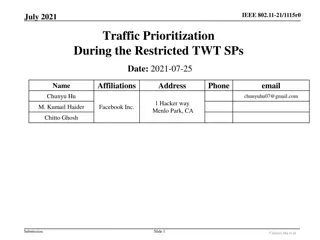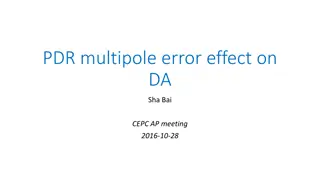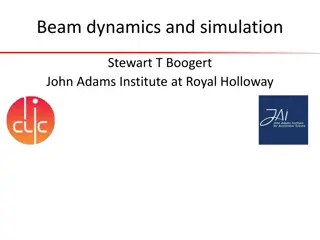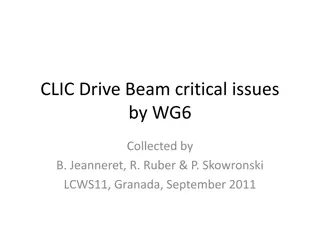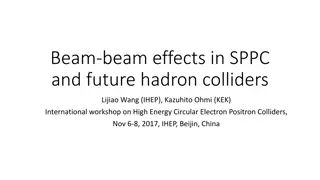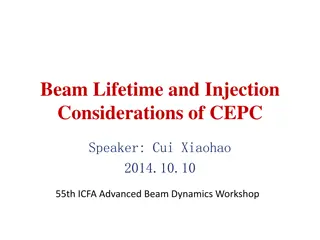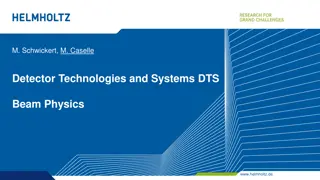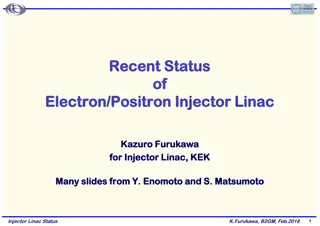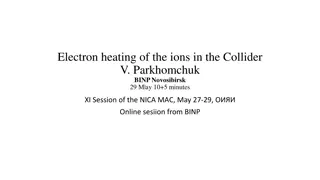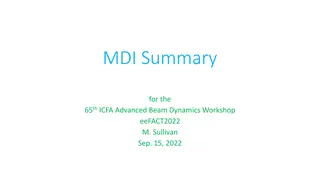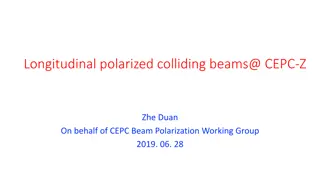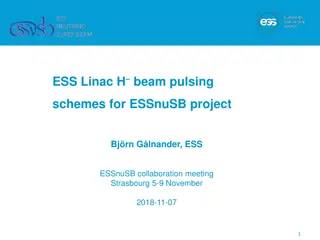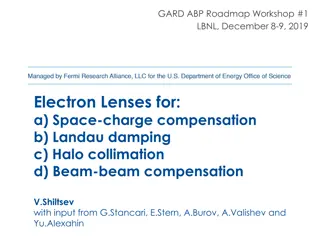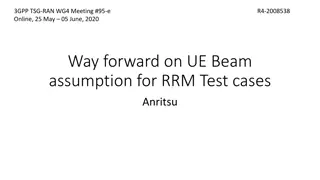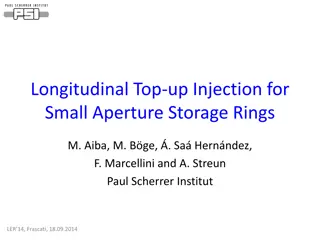SPS Beam Stability Study
Investigating the stability of bunches at the SPS flat bottom, focusing on the impact of 200 MHz TWCs and LIU-like parameters. Simulations are conducted to analyze instability criteria based on average bunch length exceeding a threshold length. The study includes simulation setup details using BLonD with 12 initial bunches, threshold observations, comparison with measurements, and evaluation after filamentation.
Uploaded on Mar 08, 2025 | 0 Views
Download Presentation

Please find below an Image/Link to download the presentation.
The content on the website is provided AS IS for your information and personal use only. It may not be sold, licensed, or shared on other websites without obtaining consent from the author.If you encounter any issues during the download, it is possible that the publisher has removed the file from their server.
You are allowed to download the files provided on this website for personal or commercial use, subject to the condition that they are used lawfully. All files are the property of their respective owners.
The content on the website is provided AS IS for your information and personal use only. It may not be sold, licensed, or shared on other websites without obtaining consent from the author.
E N D
Presentation Transcript
First results on 10s long flat-bottom simulations in the SPS M. Schwarz Acknowledgements: K. Iliakis, A. Lasheen, E. Shaposhnikova BLonD development team LIU-SPS BD WG meeting 19/01/17
Motivation: Instability observed on SPS flat bottom Main driving impedance are the 200 MHz TWCs Will bunches with LIU-like parameters be stable on flat bottom? Simulations needed start of instability LIU-SPS BD WG meeting 2 19/01/17
Criterion for instability Beam unstable: Average bunch length exceeds threshold bunch length 4?bunches> ?th Threshold bunch length is maximum bunch length after filamentation ?th= max4?40?? 100?? Same criterion used for measured and simulated data ?th~3ns 3
Simulation setup for BLonD 12 bunches (for now) Initial bunches are obtained by simulating bunch rotation in the PS (no intensity effects) 2 million macro-particles per bunch Simulating 432000 turns (10s cycle) Use full SPS impedance model Model 200MHz TWC feedback by impedance reduction Phase loop averages over first 12 bunches Computation time: Lxplus: ~1day( but can run ~1000 jobs in parallel) BLonD MPI version: 1hour(big thanks to Konstantinos!) ( but cluster can only run ~30 jobs in parallel) ( small differences due to different FFT algorithms used) commit 18/12/21 4
Simulated threshold 12 bunches, Q20 V200 = 4.5MV, V800 off FB off, FF off, LD off, PL on 116 initial distributions with different bunch profiles Use these distributions with different intensities Threshold observed in both bunch length and intensity Transition region where some bunches are stable while others are stable 5
Comparison with measurements 12 bunches, Q20 V200 = 4.5MV, V800 off FB off, FF off, LD off, PL on Simulated bunches are more stable 6
Comparison with measurements after filamentation 12 bunches, Q20 V200 = 4.5MV, V800 off FB off, FF off, LD off, PL on Better agreement when comparing bunches after filamentation 7
Summary Using the MPI version of BLonD allows computation time to be reduced from approx. day to one hour! Simulations show instability threshold, but more simulations are needed to better compare with measured threshold Next steps For comparison with measurements, use simulated distributions that match measured injected bunch profiles on a bunch-by-bunch basis Simulate with feedback -> bunches should be stable Simulate for post LS2 parameters Thank you for your attention! 8




